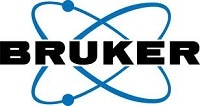To apply surface coatings, the workpieces must be dry and clean. Residues such as salts, oils or greases considerably affect the coating process. Even trace amounts of these surface impurities can cause a poor adherence of the coating substance with all the negative impacts on the product quality. With FT-IR spectroscopy using diffuse and specular reflection, surface contamination on metallic samples like metal sheets or gear wheels can be rapidly, easily, and reliably detected. The contamination can also be identified by using automated search functions and spectra libraries. This data can be very useful in determining suitable cleaning agents or identifying potential causes of the impurities.
The combination of ALPHA II and the upward looking reflectance unit (Figure 1) is the ideal instrument to perform routine surface analysis on all kinds of metallic samples. The Bruker ALPHA II FTIR spectrometer is a very compact and robust spectrometer and hence suitable for daily routine analysis.
.jpg)
Figure 1. ALPHA II spectrometer with the upward looking reflectance unit.
Surface Analysis
This example tries to find the answer to two questions regarding the surface purity of gear wheels. The first question is whether the gear wheel surface is contaminated or not and the second question is what is the chemical identity of a detected contamination. The sample (illustrated in the picture-inset of Figure 1) just needs to be positioned on top of the measurement opening of the reflectance unit. It takes just a few seconds to perform the measurement using a specially designed software wizard that guides the user through the sampling and evaluation procedure.
The reflectance spectra of a thoroughly cleaned metal gear wheel measured on the outer (blue spectra) and inner (red spectra) face of the sample are shown in Figure 2. In both cases, two spectra have been acquired on opposing positions of the sample. The sample is confirmed to be absolutely clean as there are no absorbance bands of any potential impurities in the spectra. The flat base line’s slope reflects the roughness of the sample surface.
.jpg)
Figure 2. Spectra of a cleaned gear wheel measured on the outside (blue) and on the inside (red) on two different measurement spots in each case.
In contrast, the reflectance spectra of an uncleaned sample are presented in Figure 3, clearly showing the presence of a contamination on the inner face of the sample but weak absorption bands below 3000 cm-1 can also be seen on the outside of the gear wheel due to C-H vibrations.
.jpg)
Figure 3. Spectra of a contaminated gear wheel measured on the outside (blue) and on the inside (red) on two different measurement spots in each case.
An automated library search was conducted to determine the contamination’s chemical composition (Figure 4). The sample’s spectrum has been baseline corrected and is shown in red on top of the window. The spectra below are the first two hits of the library search. The green spectrum suggests some kind of grease, while the blue spectrum indicates calcium carbonate (i.e., chalk). As can be noticed, the combination of the two library spectra delineates almost all of the bands present in the sample spectrum. This information makes it easy to select the right cleaning agent as a mild acid can be used to remove chalk and an organic fat-dissolving solvent like isopropanol or acetone can be used to treat the fat.
.jpg)
Figure 4. Search result of the library search with the sample spectrum on the top (red) and the identified contaminations fat (green) and calcium carbonate (blue) below.
Conclusion
It is evident, that the ALPHA II FTIR Spectrometer delivers reliable and robust results in surface analysis. The upward looking reflection module simplifies sampling and provides measurements with minimal effort.

This information has been sourced, reviewed and adapted from materials provided by Bruker Optics.
For more information on this source, please visit Bruker Optics.